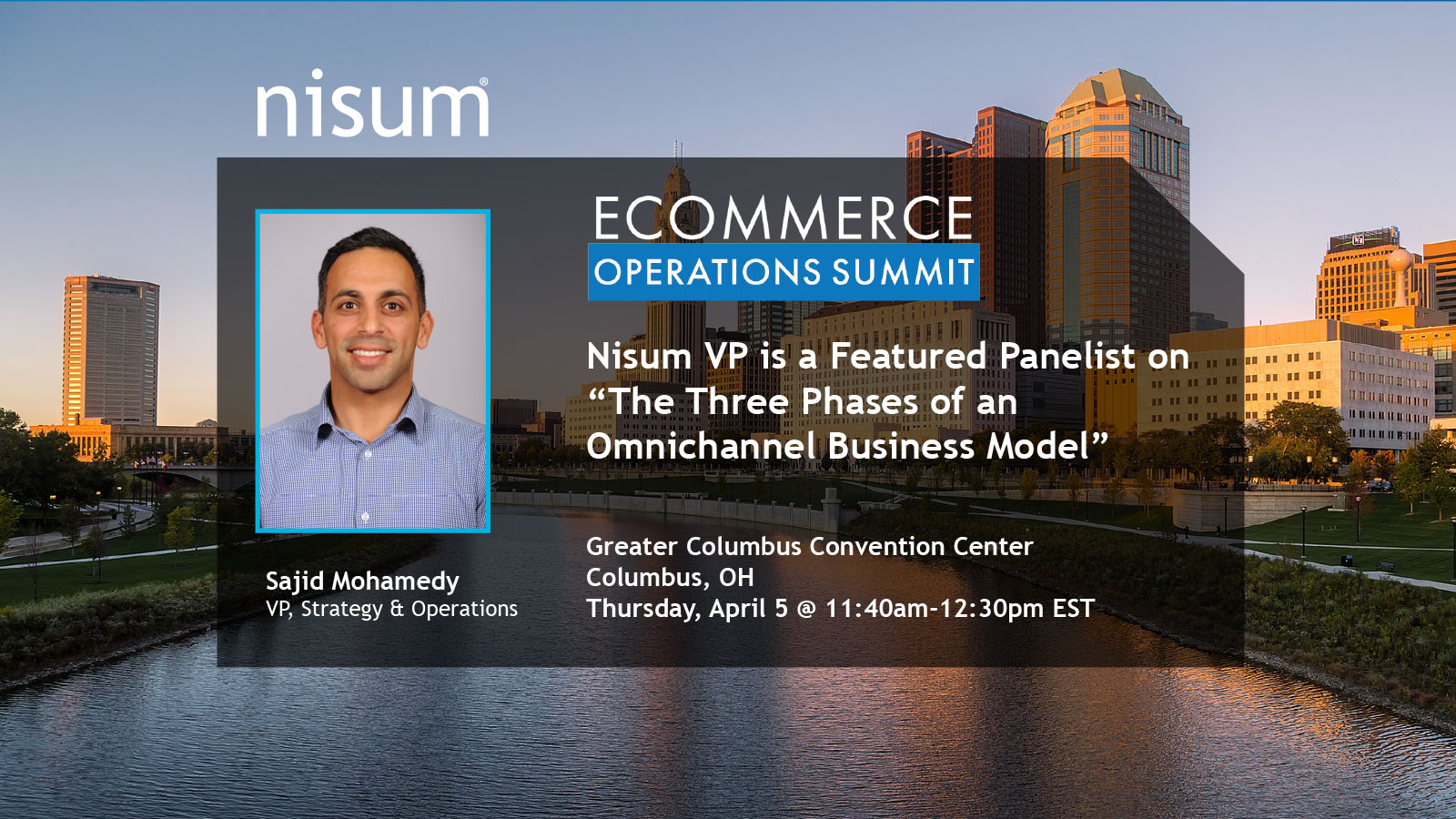Nisum VP, Kyu Cho, shares insights on what aspects of your business provide cues on whether a custom-built or off-the-shelf (OTS) eCommerce solution will be most effective in his article published in Total Retail. You can read the full text below or visit the published article here.
To Build or to Buy: Determining the Right E-Commerce Solution for You
Last year, global e-commerce sales reached $2.3 trillion, a nearly 25 percent increase vs. 2016, comprising 10.2 percent of total retail sales worldwide. As more consumers are turning to online platforms instead of brick-and-mortar stores to make purchases, it's critical that retailers have the necessary omnichannel components and functionalities in place to increase traffic and conversion rates. This is easier said than done, with advanced off-the-shelf e-commerce software and open-source platform-based, custom-built options to improve and support online commerce. As such, the first question that many retailers must answer is whether to build or buy.
Since the e-commerce and technology landscapes are so dynamically progressive, it's important for businesses to garner a clear understanding of not only what's successful for today’s market, but also what will make them successful in tomorrow’s market.
Thus, every business must first and foremost adopt a global mindset as they're building out their e-commerce architecture, and solutions must have the ability to support penetration into different geographical markets poised for significant growth in online retail. Last year in Asia-Pacific, for example, e-commerce was responsible for 14.6 percent of overall retail spend. Furthermore, China continues to boast the most online shoppers in the world, accounting for 40 percent of global retail e-commerce, and a mobile payment market 11 times bigger than the U.S. market. Similarly, Latin America is projected to outpace both North America and Europe in B-to-C e-commerce growth by 2021.
It’s also key to plan for potential external threats. It’s been said more than once that Amazon isn't just eating your lunch, it’s eating the world, something further evidenced by its vertical integration strategy. Retailers should never forget that today’s business partners may be tomorrow’s competitors.
With these factors in mind, retailers should consider the following features in building out an e-commerce solution:
- Personal marketing: How accurately will you be able to target consumers on an individual level? Experts say that the next wave of disruption will come from retailers and brands that have mastered one-to-one marketing on a mass scale.
- Chat commerce: With many retailers embracing chatbots, the next logical step is to introduce purchasing ability into chat interfaces. This is already happening and should be treated as an independent channel requiring its own strategy.
- Payment methods: While PayPal is hugely popular in the states, most people in China don’t have credit cards. Instead, they use Alipay for online checkout, in addition to a host of other financial services. E-commerce solutions must be able to integrate with third-party payment systems globally and be built to handle other forms of payment, such as cash on delivery, which is hugely popular outside of the U.S.
- Price bargaining: When looking for a specific product online, consumers will often hunt for the cheapest offer, and then search for coupon codes to bring the price down even further. Some emerging e-commerce solutions give consumers the ability to negotiate their own price at the outset to avoid this coupon chaos.
- Subscription-based models: Online shopping simplified the consumer experience by eliminating the need for people to go to physical stores. The next evolution of convenience is the subscription-based e-commerce model, which essentially eliminates the need to shop by allowing customers to set up reoccurring deliveries.
- Personal shopping experience: Once the consumer has arrived on your site, how personalized is the shopping experience? As the technology exists to further personalize shopping experiences, consumers will come to expect this as table stakes.
Internal Operations
In addition to features and functionality, employee and organizational adaptability are essential for any successful implementation of an e-commerce solution. If transformation to an omnichannel operation is the goal, will the company culture change fast enough to support the adoption?
If an organization can’t move fast enough internally to incorporate emerging technologies (e.g., AI, robotics), whether from a culture, process, bandwidth, or capability standpoint, then it makes sense to leverage third-party companies that specialize in these areas.
Furthermore, an organization must attract the increasingly scarce supply of technical talent and resources to support the growth of e-commerce. At the very least, a business must be willing to invest in development centers in other geographical areas.
From an organizational behavior perspective, a collaboration between different business units is also a must. Organizations can encourage this by implementing performance and corresponding reward programs that promote collaboration across functional areas that are needed to support new software or solution. Lastly, as the business expands across borders, organizations must promote internally embracing new and different cultures.
Answering the Question: The E-Commerce Approach for You
Many companies have successfully adopted custom solutions that provide the ability to control features and enhancements, which in turn enable them to design and control their own future. However, as appealing as this sounds, it’s also true that operating your own solution takes a lot of time and effort, and carries a hefty price tag.
On the other hand, operations based on off-the-shelf technologies have the benefit of adopting new technology and processes relatively fast. Also, an increasing number of non-American software companies provide solutions that are successful in other geographies, thus expediting the adaptability of the new e-commerce features and operating models.
Given the complexities of technology and global business structures involved in the decision-making process for choosing the right e-commerce solutions, including custom vs. OTS solutions, retailers are well-served to take the discussed external and internal factors into consideration.



